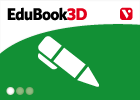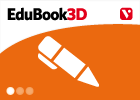Cargando...
Recursos educativos
-
Nivel educativo
-
Competencias
-
Tipología
-
Idioma
-
Tipo de medio
-
Tipo de actividad
-
Destinatarios
-
Tipo de audiencia
-
Creador
Lo más buscado
- Carnaval
- Desarrollo afectivo
- Aprender a vestirse
- Experimentos caseros infantiles
- juegos matemáticas
- Relieve de Africa
- Huesos del cuerpo humano
- Pasatiempos matemáticos
- Poemas infantiles
- Cuentos ilustrados
- juegos matemáticas
- Materiales para experimentos
- cuentos en inglés
- Experimentos sociales
- Actividades de ciencia para niños
-

Self-evaluation 4 - Rivers and seas
EduBook Organización
- 6413 visitas
Are the following statements true or false?: Most water consumed is used by industry. The consumption of water and its resources has increased with technological and scientific advancements. The water…
-

The natural environment
EduBook Organización
- 6209 visitas
The place where a living thing lives is called a habitat. When we study a habitat, we look at the living things (animals and plants) that live there. We also look at the non-living things around them.…
-

Before you start - Plant reproduction
EduBook Organización
- 5582 visitas
Didactic objectives Observe flowers and identify their parts. Recognise and distinguish between the protective and reproductive parts of a flower. Explain how a flower works. Compare different types of…
-

True/false. The simplest invertebrates
EduBook Organización
- 4960 visitas
Are the following sentences true or false? Sponges are plants that live on rocks in the sea. Sponges have cells with flagella, called choanocytes, to move around. Most flatworms are parasites.…
-

-

Answer. Atlantic climate and vegetation
EduBook Organización
- 4810 visitas
Remember what you have learned in this section and answer: In what areas of Spain is there an Atlantic climate? What are the summers like in an Atlantic climate? And the winters? What is the vegetation…
-

The leaves make the food for the plant
EduBook Organización
- 4840 visitas
3.1. The anatomy of leaves Most plants have flat green leaves. The main part of the leaf is called the blade. The part that connects it to the stem is the petiole (figure 1). The veins which transport…
-

Think about it. The need for energy
EduBook Organización
- 4753 visitas
Remember what you have studied in this section and answer the questions: Explain how plants use the energy that they receive from the Sun. In the past, what did humans use different types of mill for?…
-

Complete. Secondary sector activities
EduBook Organización
- 4589 visitas
Complete the following sentences with the missing words: Raw materials can come from different sources. Those from animals come from . Those from plants can come from or and those from minerals are…
-

Final self-evaluation 7 - The Hydrosphere
EduBook Organización
- 4577 visitas
Are the following sentences true or false? Desalination is a cheap and easy way of making fresh water from sea water. Desalination is a process for transforming salt water into fresh water. All the…
Te estamos redirigiendo a la ficha del libro...












